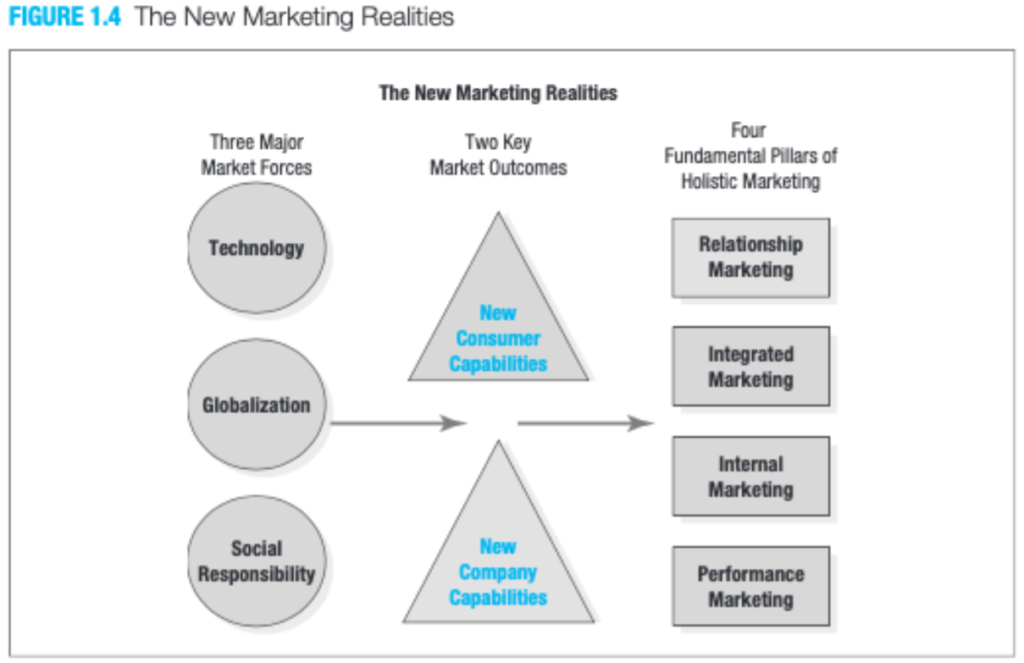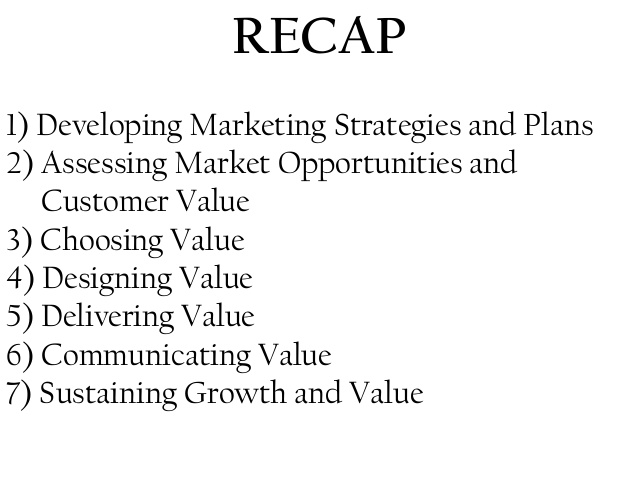History of marketing and communication
2 Quizzes
Core Marketing Concepts
10 Topics | 4 Quizzes
Lessons
Marketing Management Tasks
Figure 1.4 summarizes the three major market forces, two key market outcomes, and four fundamental pillars of holistic marketing that help to capture the new marketing realities. With these concepts in place, we can identify a specific set of tasks that make up successful marketing management and marketing leadership.

- Developing and implementing marketing strategies and plans.
The first task is to identify and plan for the organization’s potential long-run opportunities, given its market experience and core competencies. See Chapter 2 for more detail. - Capturing marketing insights.
Each organization should closely monitor its marketing environment, continually assess market potential, and forecast demand. Chapter 3 looks at marketing information and research, market demand, and the marketing environment. - Connecting with customers.
Management must decide how to best create value for the firm’s chosen target markets and how to develop strong, profitable, long-term relationships with customers, as discussed in Chapters 4 and 5. - Building strong brands.
The organization must divide the market into major market segments, evaluate each one, and target those it can best serve, as explained in Chapter 6.Next, it needs to craft a brand positioning and plan to compete effectively, as shown in Chapter 7. Also, it should understand how customers perceive its brands and plan for growth, topics covered in Chapter 8. - Creating value.
At the heart of the marketing program is the product—the firm’s tangible offering to the market—which includes the product quality, design, features, and packaging, all explored in Chapter 9. Chapter 10 looks at how firms can design and market services, and Chapter 11 examines critical marketing decisions related to pricing. - Delivering value.
Based on its products and services, how can the firm deliver value to its target market? Chapter 12 discusses channel activities needed to make the product accessible and available to customers. Chapter 13 explores the marketing decisions made by retailers, wholesalers, and physical-distribution firms. - Communicating value.
Each marketer needs to communicate to the target market the value embodied by its offerings. This requires an integrated marketing program that maximizes the individual and collective contribution of all communication activities, as shown in Chapter 14. Chapter 15 examines mass communications such as advertising, sales promotion, events, and public relations, while Chapter 16 dis-cusses online, social media, and mobile options for reaching consumers. Chapter 17 looks at personal communications such as direct and database marketing as well as personal selling. - Managing the marketing organization for long term success.
The marketing strategy should take into account changing global opportunities and challenges as well as social responsibility and ethics. Management must also establish an appropriate marketing organization. See Chapter 18 for more detail.

Marketing is all about value creation

